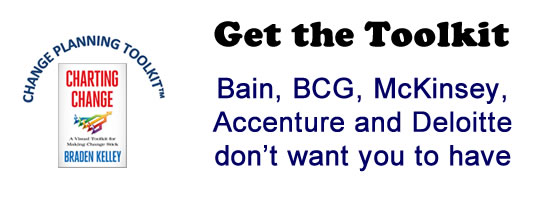Truth Behind Sears Collapse and How Your Business Can Avoid It

Common wisdom has it that Sears just couldn’t keep up with Amazon. The truth is much more interesting and holds a critical lesson that you need to know to build your business and brand.
Richard Sears was brilliant. He took the personal relationship that each customer had with local general store keepers and scaled it beyond anyone’s wildest dreams.
In 1931, while the USA was in the midst of the Great Depression, Sears made the equivalent of 2.5 billion dollars in profits. Over the next ten years it contributed an astounding one percent of US GDP. Fast forward 87 years and this week Sears filed for bankruptcy protection.
Yet another industrial era dinosaur claimed by Amazon? That’s the easy way to explain it. The truth is a bit more interesting and it holds lessons for every brand.
So Much For Loyalty
Clearly, if you were to rebuild Sears today from the ground up the company that you’d be most likely to model it after is obviously Amazon. So, why couldn’t Sears, which has now descended into the same inevitable fate as Kodak, Blockbuster, and so many other industrial era dinosaurs, do that? You’re thinking, “Well, of course they could. After all they have access to all of the same technologies as Amazon.” And yet, the same could have been said of Kodak, Blockbuster, and Borders.
The reason that all of these companies, and virtually every industrial era company, were held hostage by the past is the same. It’s what made each one of them an icon in their respective space–their brand, or more specifically, the loyalty customers had to their brands. That makes no sense, right. Hear me out.
Providing only what your existing customers, or members, want, while your business is failing, is like offering cabin upgrades, instead of lifeboats, to passengers aboard the Titanic.
Sears had built brand loyalty that spanned a century and five generations. If you’re a boomer, you undoubtedly have fond memories of the Sears catalog, which often occupied a place of reverence as the largest and most in-demand book in most homes.
Ultimately that brand loyalty turned into an immutable set of expectations about what Sears was. And it held Sears hostage to its legacy. It insulated Sears from threats that should have been obvious. It cocooned it in the expectations of the past.
In a Fortune 2016 article, “Why Sears Failed,” journalist Geoff Colvin talks about how an article he wrote in 1991 about Walmart’s potential to pull ahead of Sears triggered an indignant response from Sears executives who called his article irresponsible and misleading.
This sort of denial has its roots directly in what we call “brand loyalty.” When a company starts to sense its market potential slow, it instinctively attempts to hold onto its best customers. In many ways the company will start doing what any good company should do: develop a closer bond with its most loyal customers. Sears did this by putting in place a loyalty program called Shop Your Way. The program provides point incentives for what Sears CEO, and hedge fund manager, Eddie Lampert calls “members” and not customers or consumers. It was also intended to give Sears a better understanding of members’ behaviors.
In a 2013 Ad Age article, a spokesman for Sears said, “Shop Your Way is at the core of everything we’re doing. We’re focused on our most loyal customers, and building relationships with them is something that will drive our company to profitability.”
According to another Sears’ spokesperson, “Shop Your Way is more than a loyalty program…It transforms customer transactions into relationships and allows us to know our members better and to serve them better.”
In some ways it seemed to be a huge success. Shop Your Way accounted for over 75 percent of Sears’ sales.[v]
And that was precisely the problem; your most loyal customers will anchor you to what your brand was at its most successful.
Loyalty programs can be a powerful draw, but they can also further isolate a company from new opportunities. Providing only what your existing customers, or members, want, while your business is failing, is like offering cabin upgrades, instead of lifeboats, to passengers aboard the Titanic.
The challenge for Sears, and for any brand, is the ability to understand customers at the level of the individual. You can’t do that with broad-based loyalty programs which inevitably reinforce relationships with customers who are the most brand loyal. This only builds a confirmation bias loop in which customer behavior reinforces the current business model which then reinforces the customer behavior.
Congratulations, you’ve not only further strengthened your brand’s legacy image in the eyes of “members,” but you’ve also done a great job of convincing the rest of the marketplace that you really are stuck in time.
But wait, isn’t that exactly what Amazon is doing with Prime member? No. Amazon is using Prime to understand individuals not just markets. Markets are anonymous entities that are categorized by broad demographics such as gender, age, purchasing power, geography, and ethnography. Individuals defy those categorizations.
The same is true of Netflix, which knows your viewing habits so well that it can customize the color palette of an online ad to suite your individual preferences.
Turn The Brand Around
Establishing a relationship between a brand and its customers is more important than ever, but brand loyalty is at best only half of the equation. The other half is something that hasn’t been possible since the general store that Richard Sears eclipsed over a century ago. That’s the loyalty that a brand expresses to the customer, what I call a “loyal brand ” in my book Revealing The Invisible.
Simply put, a loyal brand is one that understands your behaviors and their context well enough to be able to anticipate and respond to your preferences and build meaningful and personalized experiences. Most importantly, loyal brands can act proactively to serve new needs and expectations before they’ve been expressed. This goes beyond just making the promise that a product or service will meet your known expectations.
Everything you do, from how you design the customer experience to how you communicate with customers to how you build a brand that looks and feels the way each customer will best respond to it has to first ask the questions, “How am I expressing loyalty to my customer?” This does not lock you into the past because now each customer has his or her own individualized experience with your brand. In many ways we are reverting to the sort of personal relationship customers had with the local shopkeeper a century ago
Sears never made the transition to a loyal brand. It continued to use industrial era marketing and customer relationships to succeed in a post-industrial era of hyperpersonalized experiences.
For example, Amazon has explored predictive sales where a product arrives at your doorstep without your having ordered it. At first blush this may sound outlandishly creepy. But stop and think about what’s actually going on.
Do You Know Who I Am?
If you had a personal shopper on monthly retainer who knew your tastes and behaviors intimately and you happened to be going on vacation to a warm weather climate in the middle of winter, what might she or he do? Look at what you had for warm weather clothing, what still fits, the particulars of styles worn at your destination, and then, naturally, buy you what you needed.
That’s exactly the value of a loyal brand; it understands you well enough to deliver value you may not have asked for, which in turn encourages you to disclose more of your behavior to the brand.
Hyperpersonalization and the anticipation of unexpressed needs is the hallmark of a loyal brand. We value most those companies and people who invest the time and energy to think ahead and deliver products or services before we ask for it. Ultimately nothing creates a greater bond of loyalty than knowing the customer at that level.
Clearly, even the companies best positioned to understand your digital behaviors and to build experiences that understand and respect them are just starting down that path. For example, the company that makes you enter your customer account number to route your call to a human being who then asks you what your customer account number is!
It’s nothing less than dumbfounding that a company you’ve been loyal to for so long hardly knows you.
That was pretty much the model of customer relationship that Sears used. And its why, no matter how hard Sears tried to reshape its brand by appealing to its most loyal customers, it never stood a chance of surviving in a world where customers expect to be treated like individuals with unique needs and preferences–something that Richard Sears would have easily recognized 87 years ago.
This article was originally published on Inc.
Image credit: Pixabay
Wait! Before you go…
Choose how you want the latest innovation content delivered to you:
- Daily — RSS Feed — Email — Twitter — Facebook — Linkedin Today
- Weekly — Email Newsletter — Free Magazine — Linkedin Group
 Tom Koulopoulos is the author of 10 books and founder of the Delphi Group, a 25-year-old Boston-based think tank and a past Inc. 500 company that focuses on innovation and the future of business. He tweets from @tkspeaks.
Tom Koulopoulos is the author of 10 books and founder of the Delphi Group, a 25-year-old Boston-based think tank and a past Inc. 500 company that focuses on innovation and the future of business. He tweets from @tkspeaks.
NEVER MISS ANOTHER NEWSLETTER!
LATEST BLOGS
Three things you didn’t know about credit cards
Photo by Ales Nesetril on Unsplash Many of us use credit cards regularly. From using them for everyday purchases to…
Read MoreFive CV skills of a business-minded individual
Photo by Scott Graham on Unsplash The skills listed on a CV help employers quickly understand your suitability for a…
Read More


